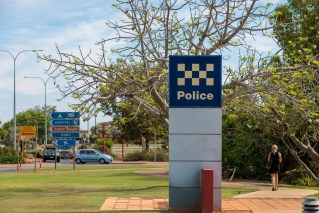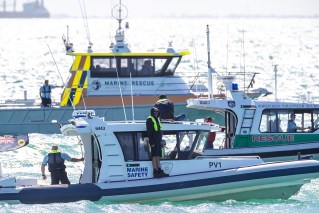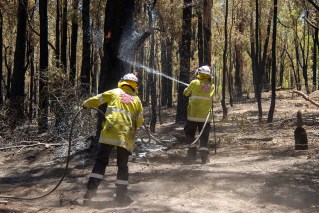Fire Commissioner says review underway into control of bushfire brigades as summer approaches
The Fire Commissioner Wayne Gregson says a review is underway into who controls local bushfire brigades.
It follows questions raised over who takes management of a bushfire after the death of firefighter Wendy Bearfoot, 45, near Albany on the south coast last year.
A review into the incident found there was confusion over which authority should take responsibility for the fire.
Earlier this year, Mr Gregson says he wrote to 122 local governments asking for their feedback on ceding control of bushfire brigades to the Department of Fire and Emergency Services.
It was part of the legislative review process into bushfire management.
He said about one third of local governments supported the idea, one third were against it, and the remainder said they needed more detail.
“In the fullness of time we’ll put up a concept paper to government to consider and then they’ll look at options,” he said.
“We need to be working much more cooperatively, much more collaboratively, and indeed we are, to work out what’s the best model at the end of the day for the community to be able to respond to bushfires.”
Mr Gregson says there is no question over who has responsibility for fire management as WA’s south heads into bushfire season.
“On the fire ground everybody works well together,” he said.
“It’s just over-archingly I have to make sure that people are collaborating, are cooperating, that they are operating in a standardised way.
“That they are responding so that everybody else who’s responding, all the government agencies, non-government agencies, charities, those responsible for shelters, those responsible for recovery, all understand whose role is what, and it’s a very complex issue.”
Mr Gregson says he does have some concerns about training and competencies.
“Some local governments, many, support their brigades and their units very, very well,” he said.
“But I do have concerns in many areas around record keeping, around membership, around training, around competencies, around who is contributing in the emergency management space.
“Potentially people are put in charge of responding to emergency events in the community without local government knowing whether they’ve got the skills or the competencies to do it and that’s a concern.”
Mr Gregson says there is no plan to take away bushfire management from local communities but he must ensure there is a systematic approach.
“This isn’t about who’s really in control other than to say, the person who is in control must be capable, must be competent, must be well trained, must be well exercised and it’s frankly not good enough in some areas,” he said.
“And, some local governments need to step up to the mark.”
Cost squabble found to be a management issue
The death of Mrs Bearfoot in Two People’s Bay nature reserve occurred last October when her truck was over-run by flames.
Initially, the City of Albany assumed management of the blaze, with some firefighters from the then Department of Environment and Conservation also responding.
As the bushfire spread, the City asked the DEC to take control, but that request was rejected.
The City of Albany then made a further request to the Department of Fire and Emergency Services, but was again told there was no need for DFES to take control.
The report found there was a squabble between the agencies over costs: “….the City of Albany wanted DFES to take charge to limit their cost exposure” and “there was reluctance from DFES to accept control of the fire because they’d be responsible for the costs.”
The management of the fire eventually fell to a volunteer firefighter with the City of Albany, who the report found was inexperienced and did not have the relevant training to be an incident controller.
The report found it was this inexperience which led to a significant wind change not being identified, despite a spot fire weather forecast being sent to the incident management team.
As a result crews were operating in what is referred to as a ‘dead man zone’ when they were engulfed by the firestorm.
It says better communication and coordination between the City and other agencies would have increased the chance of the human error being identified.
The report made 10 recommendations, including ensuring critical operational procedures such as “red flag warnings” are used by all agencies involved in fire incidents.
It also recommends all fire managers are trained to correctly interpret spot fire weather forecasts.
DFES says it has taken a number of actions in response to each recommendation.








